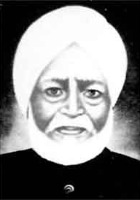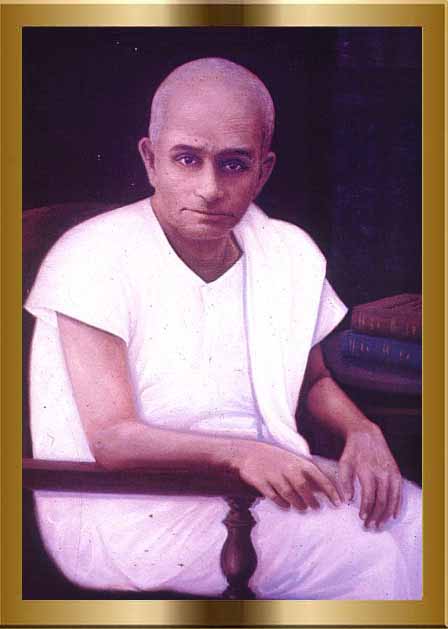Cross Posted on InstaScribe Blog
In keeping with our our tradition (2012,2013, 2014), we have compiled a list of Indian authors whose work has entered public domain at the beginning of this year. The criteria for a particular work to enter public domain this year is for the author to have died in calendar year 1954 and the work to have been published before his death. If the work has been published after the author’s death, it will only come out of copyright after 60 years from date of publication.
We collected the data from various sources including Wikipedia, books on the history of Indian literature (brought out by the Sahitya Academy) and other online sources. While the sources for individual photos and pieces of information have not been attributed, we would like to acknowledge all these sources here. Many of the sources are linked below.
There are bound to be mistakes in this data. So please point out anything you notice. If you know of more Indian authors who died in 1954 and hence have entered public domain this year, do let us know and we will add it to the list with your reference.
Why should you as a writer or someone who loves books care? An author entering public domain means that most of his works are now free to be republished, translated, and converted to different formats and introduced to a new audience in any way you can imagine. It is possible to digitize these works and conserve them forever. So dig into the list and find some gems. And when you find one, let the whole world know.
Cornelia Sorabji(1864-1954)

She was India’s first woman lawyer. Born to a Christian, Parsi family in Nasik in 1866, Cornelia Sorabji had an illustrious career that spanned nearly sixty years. Sorabji’s writing reflects colonial India and her life as a woman and as a lawyer. Her stories like those in Love and Life behind Purdah (1902) deal with the lives of women in the zenana and draw on the need for engagement and social reform. She was an active advocate of children and women as is evident in her books Sun-Babies: Studies in the child life of India and Between the Twilights : Being studies of India women by one of themselves (1908).
V.V. Srinivasa Aiyangar (b.1871-1954) This doyen of the Madras Bar used his expertise in writing the farcical to create a book called Dramatic Divertissements(2 volumes were published by 1921). This work is a series of playlets that exposes the weaknesses of the urban South Indian middle class: Blessed in a wife, The Point of View, The Surgeon General’s Presumption, Vichu’s Wife.
Lalcand Amard’inomal Jagatiani (1885-1954) At the age of 26, this versatile Sindhi author was the first Hindu to write a biography of Hazrat Muhammad entitled Muhammad Rasul Allah (1911), a work which won critical acclaim. Along with Bherumal Mahrichand and Jethmal Parsrum, he was a formidable doyen of Sindhi literature. He taught for a while at the Sind Madrasatul Islam where he studied Islam. His knowledge had no barriers- he was adept at the Vedas, Upanishad, Islamic philosphy, Theosophical Society literature, the Sindhi Sufi mystic thought (his work Sunharo Sacal published in 1916 deals with the work of Sacal Sharmast, a Sindhi Sufi poet) besides the poetic works of Tagore and the philosophies of Marx and Lenin as well as Gandhian ideals. He wrote sixty books including novels, essays, short stories and plays. His fiction Coth Jo Candu (1909) is well-known.
Kota Venkatachalam (1885-1954): A Telugu scholar, he is most known for his work Brahmanda Srsti Vijnanam(1949), an analysis of the Sanskrit puranas in nationalistic terms.

(Source: http://sobhanaachala.blogspot.in/2014/04/blog-post_22.html)
Garuda Sadashiva Rao (1874-1954): He was a popular Kannada playwright. This actor and supporter of the freedom movement wrote a new chapter in the history of professional theatre in India. He founded Sivasuta Prasadika Nataka Mandali (1907) and Dauatreya Nataka Mandali (1916). Garuda Sadashiva Rao has a famous story associated with him – he wrote a play about Jesus Christ and discussed it with his veteran friends- Karanth and Padukone Ramanand Rao. Although they were unable to stage it initially on religious grounds, it was a Christian scholar from Dharwad called Uttangi Channappa who supported the play, which later on went to become a success. The veteran dramatist also wrote many other plays including Sri Rama Paduka Pattabhisheka (1929) and Yaccama Nayaka (1949).
Rayasam Venkata Sivudu (1874?- 1954?): He was a writer and social reformer. He was most well known for his Telugu short stories titled under Cithrakta manjari.He wrote novels and biographies, and was the editor of Zanana Patrika, a magazine for women.
Lala Dhani Ram Chatrik (1876-1954): Known as the founder of Punjabi poetry.this much revered poet was the first to standardize the typeset for Gurumukhi script. He is famous for the use of traditional Punjabi poetic genre Kissa- famous works include Kaser Kiari(1940) and Navam Jahan(1945). His work rings of realism and imagery straight out of the Punjabi countryside.

(Source: http://www.poemhunter.com/dhani-ram-chatrik/)
Nalappatu Narayana Menon(1887-1954)- He was a noted Malayalam poet and translator, famous for his elegy to his wife titled Kunnunirthulli(1924). It was so popular a poem that many fans were disheartened when he did marry a second time fifteen years after the death of his first wife. Nalapat was a formidable writer alongside his companion Vallathol.
His best known work includes Paavangal, a translation of Victor Hugo‘s Les Misérables.It has been said that Mahatma Gandhi advised this stalwart to rewrite Les Miserables as a transliteration, supplanting the characters and the plot in the Kerala milieu. Yet, it was not to be and Nalapat created a translation that triggered off a social revolution in the the Southern state of Kerala.

(Source: http://www.keralasahityaakademi.org/sp/Writers/PROFILES/Nalappat/Html/NalappatPage.htm)
Ramanlal Vasantlal Desai (1892-1954): He was a very popular Gujarati writer in the 1930s and his writing primarily dealt with middle class life in Gujarat. He was influenced by Gandhian ideals and communism. His well-known novels are Divyacaksu(1932), Purnima(1932),Bharelo Agni(1935), Gramalakshmi in four volumes( astory of rural resurgence), Apsara(1933-1949)and Gai Kal(1950) ( a part of his autobiographical writing). Desai’s plays such as Samyukta (1915) were successful.
Teja Singh (1894-1954). A major Punjabi prose writer and educator, he introduced the litewrary essay in Punjabi on western models. Navian Socan(1949) and Sabiacar(1952) are his collections of essays. His autobiography Arsi is considered his best work and his Anglo-Punjabi dictionary is still considered useful.

(Source: http://www.sikhiwiki.org/index.php/Professor_Teja_Singh)
Jibananda Das(1899-1954): Considered to be the most significant poet of the subcontinent after Tagore, Jibananda Das was often called the loneliest poet. He was a recluse and true to his introvert behavior, his poetry resonated with pain, seriousness and an interesting mix of the self-absorption leading to the knowledge of experience. He taught in various colleges in Kolkata. His poetic career began with Jhara Palak (Fallen feathers) in 1928. In his subsequent volumes of poetry, he cast off tradition and delved into complex metaphors and striking language that the more contemporary audience enjoyed.
Besides poetry, Jibananda Das has written essays, short stories and novels as well. Although he initially started his career with descriptions of the rural world, the later part of his short life was spent in analysing depression and loneliness, and the complexities of relationships.

Some of his works include Dharsar Pandulip(The Faded Manuscript-1936), Mahaprathibi(The Great Earth-1944), Satti Tarar Timir(The darkness of the seven stars-1948), Banalata Sen(1952) and Satti Tarar Timir(1954).
Prabhat Chandra Adhikari (1900-1954) An Assamese poet famous for his collection called Dohavali.
Harinder Singh Rup (1907-1954). A major Punjabi poet, he wrote in neo-classical style. His Vars or collections were traditional poems imbued with a modern world view. His famed works include Nave Pandh (1945), Dunghe Vahin (1947) Punjab dian varam(1942) and Manukh di var(1952).

















